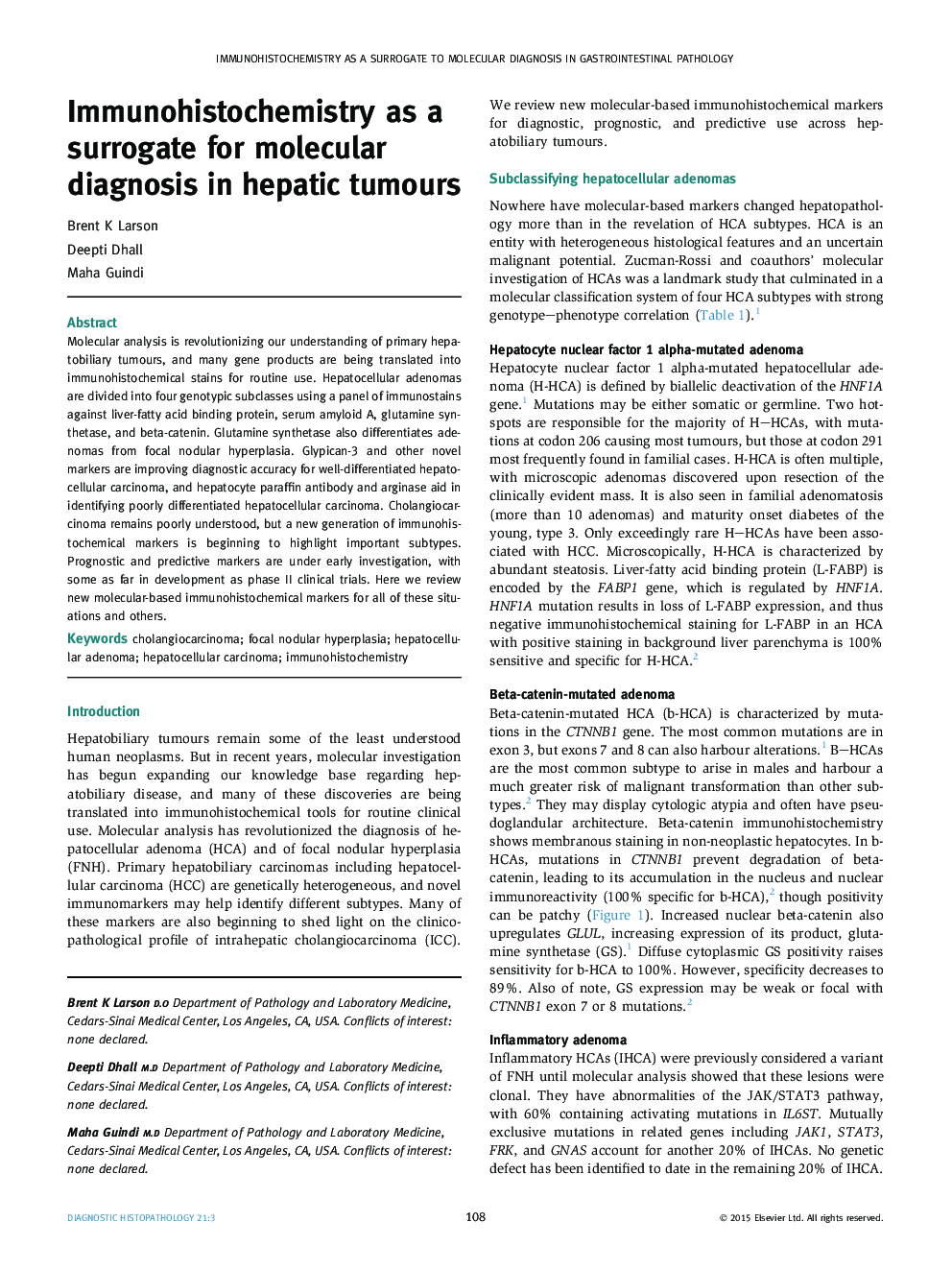| Article ID | Journal | Published Year | Pages | File Type |
|---|---|---|---|---|
| 4131035 | Diagnostic Histopathology | 2015 | 8 Pages |
Molecular analysis is revolutionizing our understanding of primary hepatobiliary tumours, and many gene products are being translated into immunohistochemical stains for routine use. Hepatocellular adenomas are divided into four genotypic subclasses using a panel of immunostains against liver-fatty acid binding protein, serum amyloid A, glutamine synthetase, and beta-catenin. Glutamine synthetase also differentiates adenomas from focal nodular hyperplasia. Glypican-3 and other novel markers are improving diagnostic accuracy for well-differentiated hepatocellular carcinoma, and hepatocyte paraffin antibody and arginase aid in identifying poorly differentiated hepatocellular carcinoma. Cholangiocarcinoma remains poorly understood, but a new generation of immunohistochemical markers is beginning to highlight important subtypes. Prognostic and predictive markers are under early investigation, with some as far in development as phase II clinical trials. Here we review new molecular-based immunohistochemical markers for all of these situations and others.
